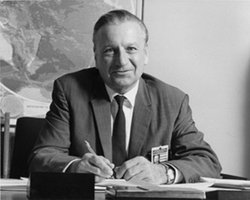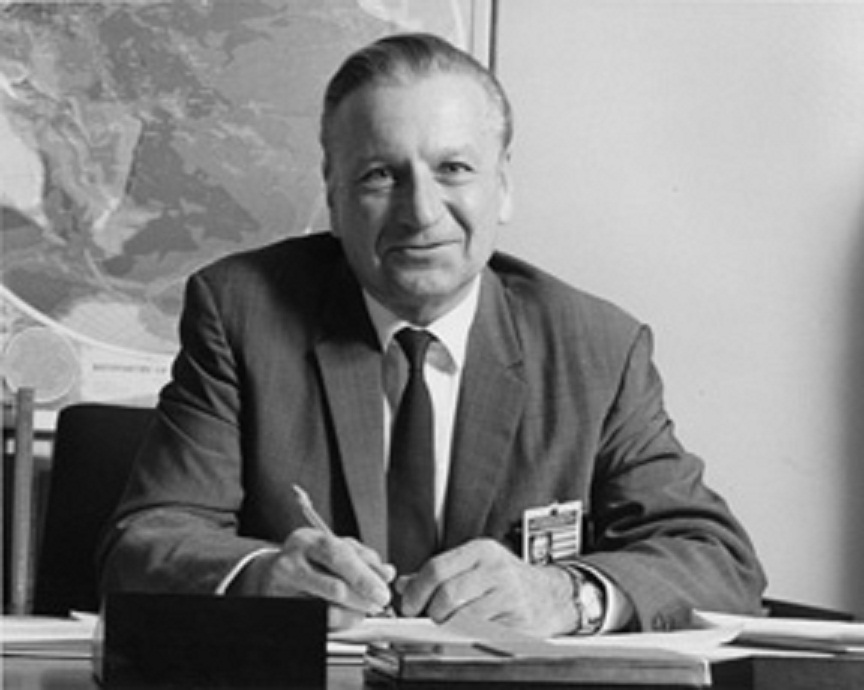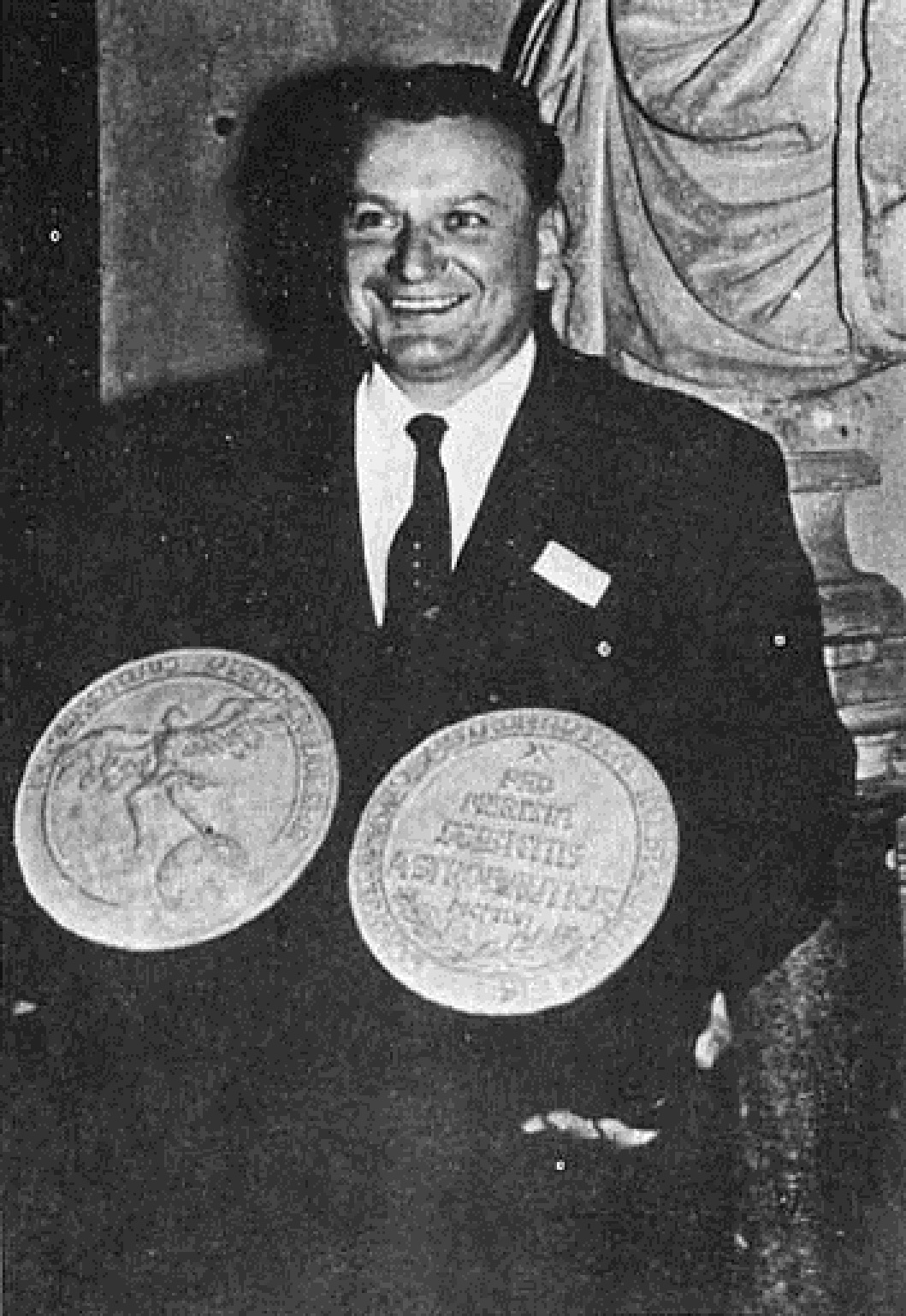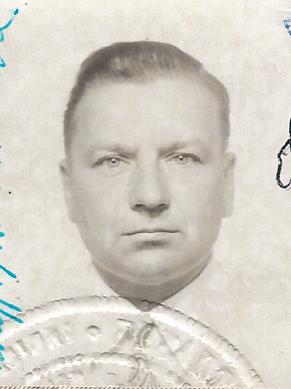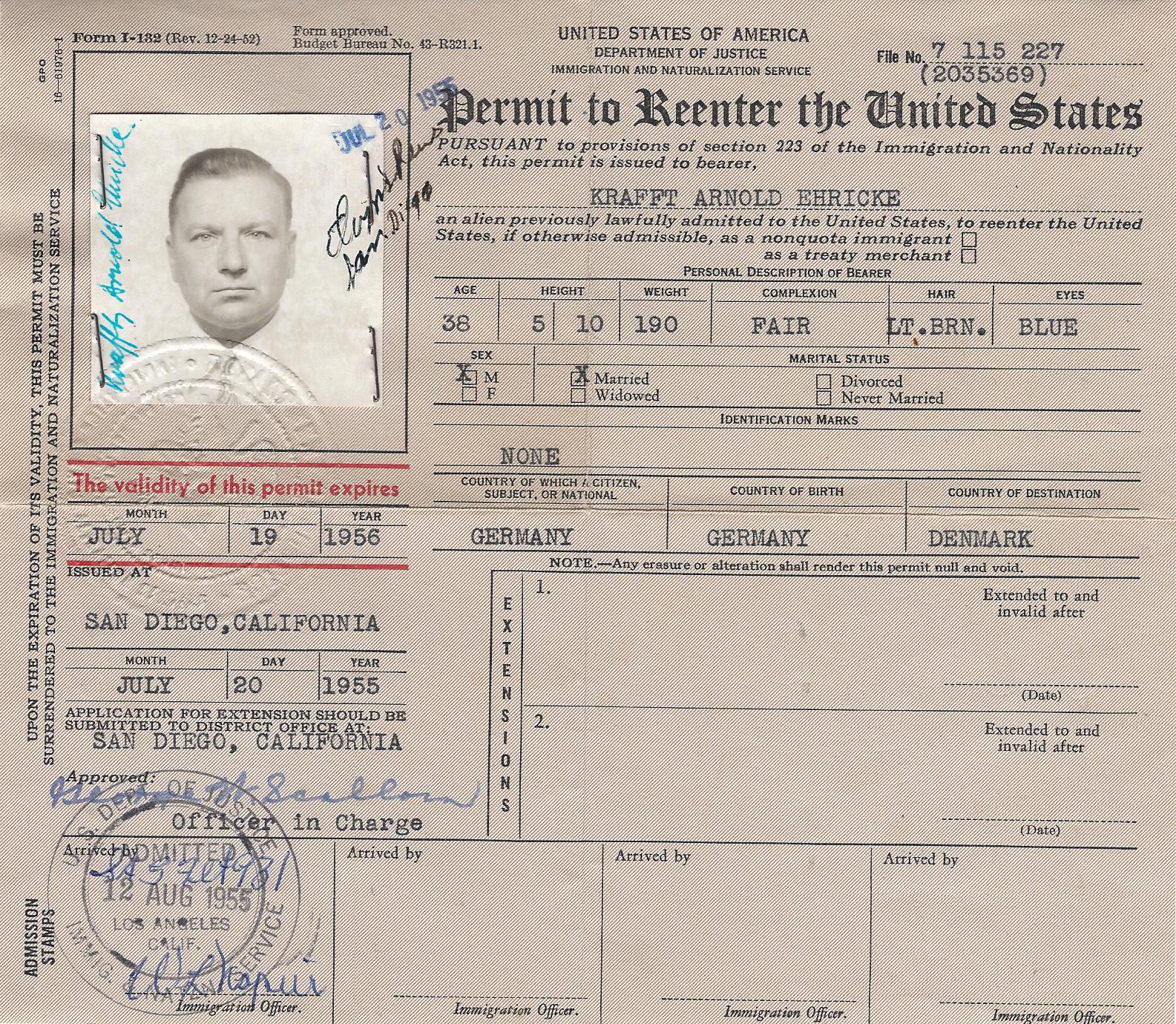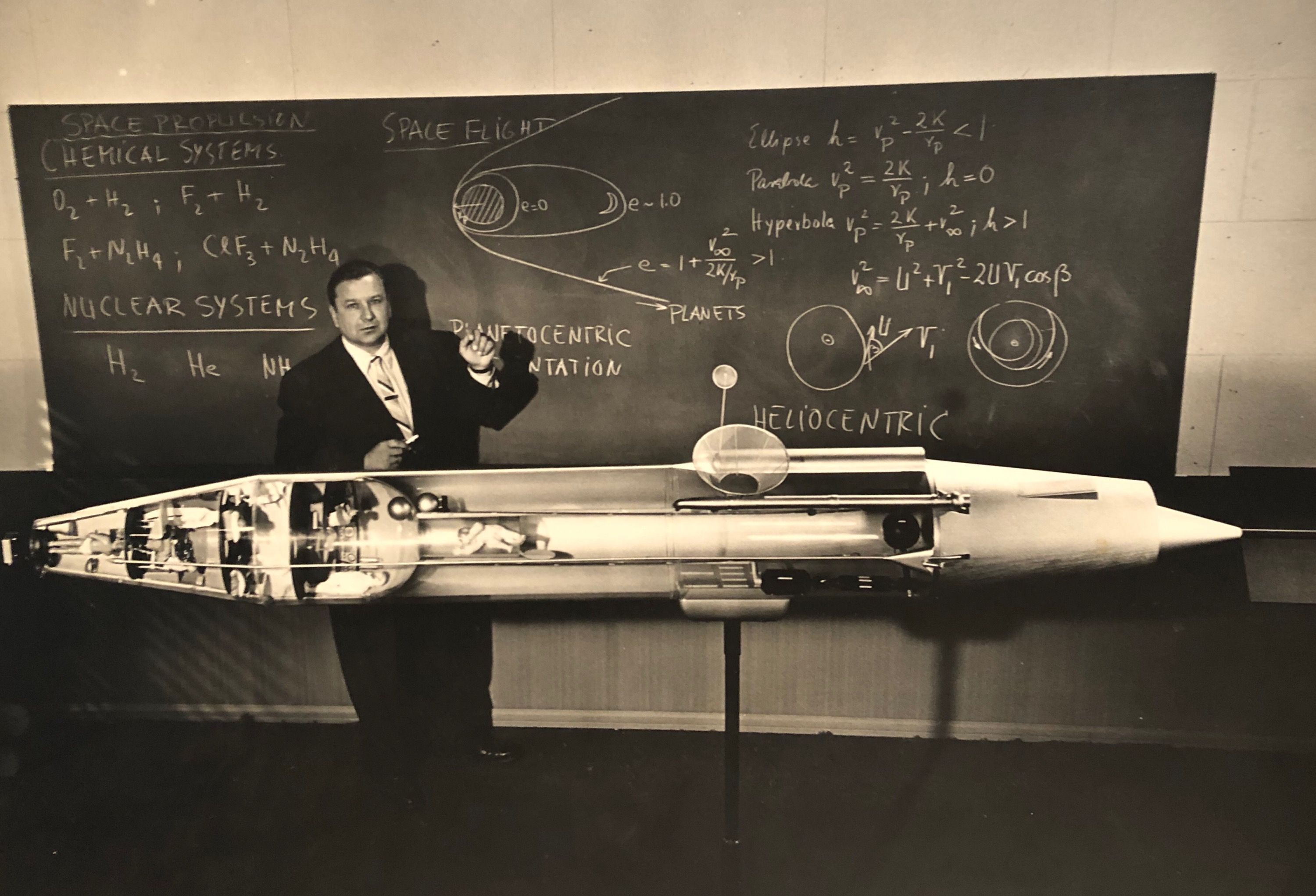Krafft A. Ehricke, whose dreams drew mankind toward space and whose scientific talents still are helping us get there, died yesterday of cancer at his La Jolla home after four decades as a pioneer in rocketry and space exploration. He was 67.
Ehricke once said that, at the age of 12, he told his mother he wanted to go the moon. He never made it, but the rockets he designed and the visions he fought for have sent men or their machines around much of the solar system.
The family said Ehricke will be cremated, and his ashes saved until it's possible to send them into space.
Ehricke, born in Berlin, was one of Werner Von Braun's World War II scientists who developed the V-2 missile that battered London.
He came to the United States with that group after World War II, and while at General Dynamics' Convair Division in San Diego from 1956 to 1965, he was credited with conceiving and developing the Centaur rocket -- the powerful upper-stage engine that has launched every American spaceship to probe other worlds.
With 69 of the gaint rockets produced at the Convair plant, the Centaur has been "a key program" for the company and has pumped millions of dollars into the San Diego economy, a General Dynamics spokesman said.
More importantly, said Robert Freitag, a veteran scientist at National Aeronautics and Space Administration headquarters in Washington, D.C., "he conceived ... and fought for the early use of hydrogen as a (rocket) propellant. That has been fundamental to our success in space."
Liquid hydrogen fuels Centaur, sent astronauts to the moon and now powers the space shuttle. But 25 years ago, recalled NASA's Jesco Von Puttkamer, "a lot of us had the feeling it was dubious that liquid hydrogen could be used to carry people safely. He never really doubted it, and he was instrumental in getting that upper-stage developed."
"That toughness in following a vision also applied to his longer-range view that went very far into the future," Von Puttkamer said.
Ehricke, with his courtly Old World manners and infectious enthusiasm, argued that the colonization of the moon, the planets and the far reaches of space was inevitable. He called this grand adventure the "extraterritorial imperative."
In a public lecture a month ago, he said, "Human beings are going transplanetary (and that) will introduce us to a new trait. We will be learning how to build a new world rather than destroying an old world. ... That is a good thing."
He spoke of small towns orbiting the moon, then vast cities spreading across it; of mining lunar materials to build and fuel spaceships to Mars and beyond; of tourists routinely visiting space, and of the joys of living in reduced gravity.
But where others painted similar grandiose pictures, Ehricke was one of the few to show that it could be done and must be done. He put scientific fact and mathematical formulas to his dream.
Because of that, Von Puttkamer said, his greatest legacy may be that "he convinced a lot of people that those visions are not just fantasies and that somewhere over the horizon are some of the things Krafft talked about. A lot of people are following Krafft's dreams because he gave them the confidence to believe it was conceivable."
Ehricke left Convair in 1965 to join Rockwell International in Los Angeles. For the past few years, he headed a consulting firm called Space Global Co. in La Jolla.
He recently received the Goddard Astronautics Award from the American Institute of Aeronautics and Astronautics for "more than 40 years of practical and visionary contributions to astronautics."
He is survived by his wife, Ingeborg, and three daughters, Astrid Ehricke of San Diego, Dorothy Neufeld of Palos Verdes and Christa Deer of San Rafael.
The family said services will be private, but a memorial service is being planned.
Krafft A. Ehricke, whose dreams drew mankind toward space and whose scientific talents still are helping us get there, died yesterday of cancer at his La Jolla home after four decades as a pioneer in rocketry and space exploration. He was 67.
Ehricke once said that, at the age of 12, he told his mother he wanted to go the moon. He never made it, but the rockets he designed and the visions he fought for have sent men or their machines around much of the solar system.
The family said Ehricke will be cremated, and his ashes saved until it's possible to send them into space.
Ehricke, born in Berlin, was one of Werner Von Braun's World War II scientists who developed the V-2 missile that battered London.
He came to the United States with that group after World War II, and while at General Dynamics' Convair Division in San Diego from 1956 to 1965, he was credited with conceiving and developing the Centaur rocket -- the powerful upper-stage engine that has launched every American spaceship to probe other worlds.
With 69 of the gaint rockets produced at the Convair plant, the Centaur has been "a key program" for the company and has pumped millions of dollars into the San Diego economy, a General Dynamics spokesman said.
More importantly, said Robert Freitag, a veteran scientist at National Aeronautics and Space Administration headquarters in Washington, D.C., "he conceived ... and fought for the early use of hydrogen as a (rocket) propellant. That has been fundamental to our success in space."
Liquid hydrogen fuels Centaur, sent astronauts to the moon and now powers the space shuttle. But 25 years ago, recalled NASA's Jesco Von Puttkamer, "a lot of us had the feeling it was dubious that liquid hydrogen could be used to carry people safely. He never really doubted it, and he was instrumental in getting that upper-stage developed."
"That toughness in following a vision also applied to his longer-range view that went very far into the future," Von Puttkamer said.
Ehricke, with his courtly Old World manners and infectious enthusiasm, argued that the colonization of the moon, the planets and the far reaches of space was inevitable. He called this grand adventure the "extraterritorial imperative."
In a public lecture a month ago, he said, "Human beings are going transplanetary (and that) will introduce us to a new trait. We will be learning how to build a new world rather than destroying an old world. ... That is a good thing."
He spoke of small towns orbiting the moon, then vast cities spreading across it; of mining lunar materials to build and fuel spaceships to Mars and beyond; of tourists routinely visiting space, and of the joys of living in reduced gravity.
But where others painted similar grandiose pictures, Ehricke was one of the few to show that it could be done and must be done. He put scientific fact and mathematical formulas to his dream.
Because of that, Von Puttkamer said, his greatest legacy may be that "he convinced a lot of people that those visions are not just fantasies and that somewhere over the horizon are some of the things Krafft talked about. A lot of people are following Krafft's dreams because he gave them the confidence to believe it was conceivable."
Ehricke left Convair in 1965 to join Rockwell International in Los Angeles. For the past few years, he headed a consulting firm called Space Global Co. in La Jolla.
He recently received the Goddard Astronautics Award from the American Institute of Aeronautics and Astronautics for "more than 40 years of practical and visionary contributions to astronautics."
He is survived by his wife, Ingeborg, and three daughters, Astrid Ehricke of San Diego, Dorothy Neufeld of Palos Verdes and Christa Deer of San Rafael.
The family said services will be private, but a memorial service is being planned.
Sponsored by Ancestry
Advertisement
Advertisement
